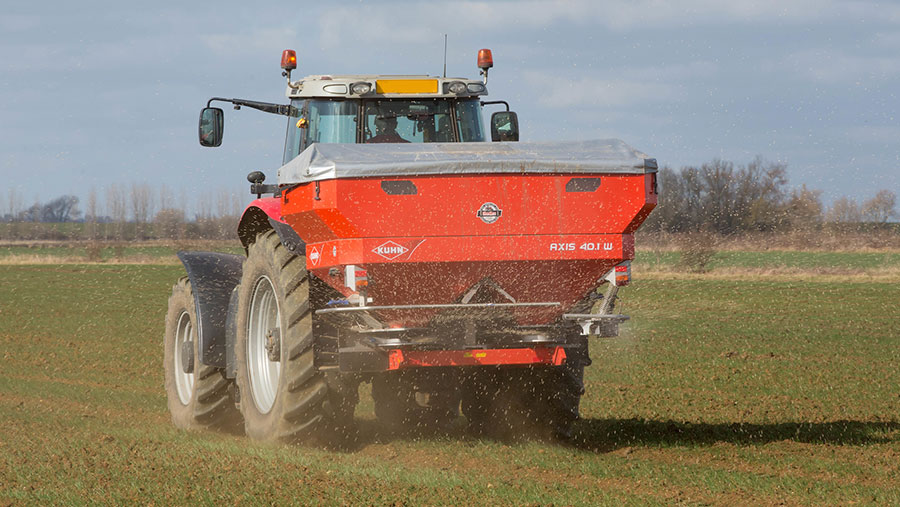No wheat yield benefit at high fertiliser rates, says trial
 © Tim Scrivener
© Tim Scrivener Increasing the amount of nitrogen applied to a potentially high-yielding feed wheat variety failed to give a response in a Niab Tag trial last year.
Work looking at whether growers are putting enough nitrogen on newer wheat varieties, which tend to have a greater requirement for the nutrient, found that going above the standard farm practice of applying 220kg/ha had no effect on yield.
See also: How the new fertiliser guidelines will benefit farmers
The trial, carried out at the site in Warwick on feed variety Santiago, increased the amount of nitrogen applied from 220kg/ha right up to 340kg/ha, in increments of 30kg/ha.
The highest yield of 11.55t/ha came from the lowest application of 220kg/ha, confirms Richard Overthrow, Niab Tag’s regional agronomist in the West, who adds that this figure supports the findings of previous work.
Optimum rate
“When we look at all of the nitrogen data we have generated over the years, it is clear that the optimum amount of nitrogen required for most wheat crops in most years is 200-240kg/ha.”
As a result, he sounds a note of caution about using yield prediction to adjust nitrogen amounts, as it can be wasteful.
“If something is already limiting yield, adding more nitrogen won’t help. It isn’t a magic bullet.”
In the Warwick trial, every bit of the extra nitrogen applied was unnecessary, he adds.
“We saw a very flat response to nitrogen, with yields actually dropping a bit as the total amount increased.”
He acknowledges the conditions throughout the growing season may have had a bearing on the result, and were very different to those encountered in 2015.
“We had a very cold spring in 2016, followed by a lack of sunlight in the summer. So although the extra nitrogen may have helped to produce more grain sites, the crop didn’t have the ability to fill them. The grain specific weight was knocked too.”
He will be repeating the work in 2017, using a different variety and a lower seed rate.
“This trial was drilled at 320 seeds/sq m, so we ended up with a very thick crop.”
This season
His advice to growers ahead of this season is to gear nitrogen to yield potential, using soil N levels as an indicator of this.
“You need to be confident of achieving your expected yield. Nitrogen is not a steroid and it can’t be used to raise your long-term yield average.
“If you haven’t dealt with yield limiting factors, then you won’t see a response and you will simply be wasting fertiliser.”
